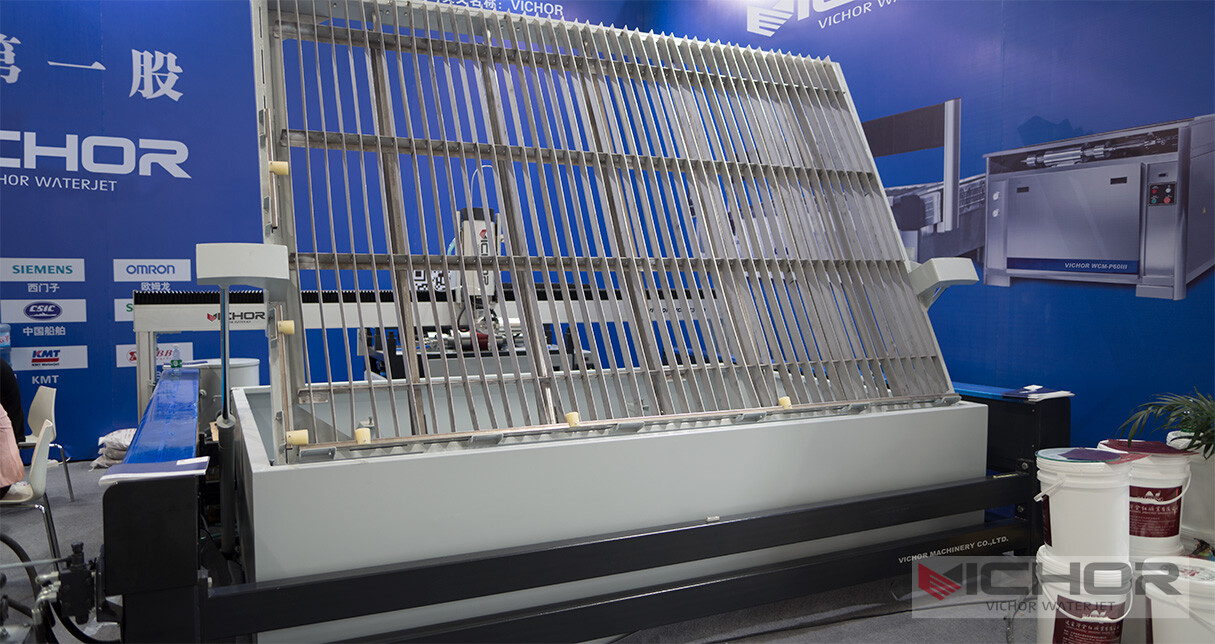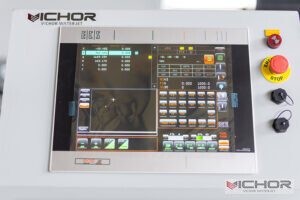
5 Key Advantages of Water Jet Concrete Cutting Machines: Precision, Power & Versatility
The construction and demolition industries constantly seek safer, more precise, and less disruptive methods. Enter the water jet concrete cutting machine – a technology harnessing the incredible power of ultra-high-pressure water, often combined with abrasives, to slice through reinforced concrete and other tough materials with remarkable accuracy. Moving beyond traditional saws and jackhammers, these systems offer a unique blend of capabilities. Let’s explore five key advantages that make water jet concrete cutting machines an indispensable tool for modern projects.
1. Unmatched Precision and Clean Cutting Edges
One of the most compelling reasons to choose a water jet concrete cutting machine is its exceptional precision. Unlike mechanical methods that rely on physical contact and can cause chipping, spalling, or vibration damage, waterjet cutting is a non-thermal, non-contact process.
How it Works: A high-pressure intensifier pump pressurizes water to extreme levels (typically 30,000 to 90,000+ PSI). This pressurized stream is forced through a tiny orifice in a jewel (diamond or sapphire), creating a supersonic beam of water. For cutting concrete and rebar, an abrasive material (usually garnet sand) is introduced into this stream just after the orifice, within a mixing tube. The abrasive particles are accelerated by the water jet, creating an erosive effect that slices through the concrete matrix and embedded steel reinforcement.
The Precision Advantage: The cutting “kerf” (width of the cut) is very narrow, typically ranging from 0.02 inches to 0.05 inches (0.5mm to 1.3mm) for abrasive waterjets. Computer Numerical Control (CNC) systems guide the cutting head with extreme accuracy, allowing for complex shapes, intricate openings (for pipes, ducts, electrical conduits), straight lines, and beveled edges that would be impossible or prohibitively expensive with saws or core drills. There is minimal material loss and virtually no damage to the surrounding concrete structure. The cut edges are smooth and require little to no finishing work.
2. Elimination of Heat-Affected Zones (HAZ) and Structural Stress
Traditional thermal cutting methods like oxy-fuel torches or plasma cutters generate intense localized heat. When applied to concrete, this heat can be disastrous:
Spalling and Cracking: The rapid heating and cooling cycle can cause surface spalling (chunks breaking off) or induce micro-cracks deep within the concrete, significantly compromising its structural integrity and long-term durability.
Reinforcement Damage: Heat weakens the steel rebar, potentially reducing its tensile strength and load-bearing capacity. This is a critical safety concern.
A water jet concrete cutting machine solves these problems completely:
Cold Cutting Process: Waterjet cutting is inherently a cold process. The water stream cools the cutting zone as it works. There is absolutely no heat transferred to the concrete or the reinforcing steel.
Preserving Integrity: By eliminating thermal stress, HAZ, and micro-cracking, the structural integrity of the remaining concrete is fully preserved. The rebar retains its original strength. This is absolutely crucial for structural modifications, seismic retrofitting, or creating openings in load-bearing walls and slabs where maintaining the strength of the surrounding material is paramount.
3. Minimal Vibration and Reduced Noise Pollution
Mechanical cutting methods (diamond saws, wall saws, core drills) and demolition tools (jackhammers) generate significant vibration and noise:
Vibration Hazards: Prolonged exposure to hand-arm vibration (from hand-held saws or drills) is a serious health risk (Hand-Arm Vibration Syndrome – HAVS). Vibration transmitted through structures can also damage sensitive equipment, historic buildings, or cause cracks in adjacent finishes.
Noise Pollution: Construction noise is a major environmental and workplace hazard, requiring hearing protection and potentially causing disturbances in occupied buildings or sensitive areas (hospitals, schools, residential zones).
Water jet concrete cutting machines offer a dramatically quieter and vibration-free alternative:
Low Vibration: The cutting force of the water-abrasive stream is highly localized and non-impact. While the pump unit generates some vibration (typically isolated at its location), the cutting head itself imparts negligible vibration into the workpiece or surrounding structure. This protects both workers and the building fabric.
Quieter Operation: Although the high-pressure pump produces noise, the cutting process at the nozzle is relatively quiet compared to the screech of diamond blades or the pounding of jackhammers. This allows work to proceed in noise-sensitive environments with significantly less disruption.
4. Enhanced Safety and Environmental Friendliness
Safety and environmental responsibility are increasingly critical in construction. Water jet concrete cutting machines excel in both areas:
No Dust Generation (Silica Hazard): Concrete cutting with saws creates vast amounts of respirable crystalline silica (RCS) dust. Silica dust is a known carcinogen causing silicosis and other serious lung diseases. Waterjet cutting suppresses dust at the source. The water stream encapsulates the concrete particles and abrasive, creating a slurry that falls directly below the cut or is captured by containment systems. This drastically reduces airborne RCS, protecting worker health and eliminating the need for complex dust extraction setups.
Reduced Fire Hazard: The absence of sparks or heat significantly reduces the risk of fire, especially crucial when working near flammable materials, fuels, or in environments with explosive atmospheres (e.g., petrochemical plants, refineries). This makes the water jet concrete cutting machine intrinsically safer in hazardous locations.
No Hazardous Fumes: Unlike thermal cutting, no toxic fumes (ozone, nitrogen oxides, metal vapors) are produced.
Waste Management: The primary waste is a slurry of water, spent abrasive (garnet), and concrete fines. Garnet is non-toxic and inert. This slurry can often be filtered, with the water recycled and the solid waste disposed of as non-hazardous landfill material, making it more environmentally manageable than contaminated slurry from wet sawing (which still generates RCS aerosols) or piles of dry dust.
5. Versatility: Cutting Complex Shapes and Diverse Materials
The adaptability of the water jet concrete cutting machine is truly remarkable:
Reinforced Concrete Mastery: It cuts seamlessly through concrete of any strength and density, simultaneously slicing through embedded steel reinforcement (rebar, mesh, post-tension cables) without changing tools or processes. There’s no risk of blade damage from hitting metal.
Complex Geometries: Thanks to CNC control, waterjets can cut virtually any 2D shape imaginable – curves, angles, holes, slots, intricate patterns – with ease and precision. This is invaluable for architectural features, creating openings for complex MEP (Mechanical, Electrical, Plumbing) installations, or selective demolition.
Multi-Material Capability: Beyond concrete and steel, the same water jet concrete cutting machine can cut a vast array of materials: other composites, metals (stainless, aluminum, titanium), stone, tile, glass, rubber, plastics, and even explosives. This makes it an incredibly versatile asset for contractors handling diverse projects.
Thickness Capacity: While cutting speed decreases with thickness, modern high-power abrasive waterjet systems can cut concrete and rebar sections exceeding 24 inches (600mm) thick. Robotic arms can further extend capabilities for 3D cutting.
Accessibility: Smaller, portable waterjet systems (PWJs) can access confined spaces where large track saws or wall saws cannot reach. They can also start cuts from the middle of a slab without needing an edge or pilot hole.
Beyond the Basics: Applications and Considerations
The advantages outlined above make the water jet concrete cutting machine ideal for numerous demanding applications:
Selective Demolition: Precisely removing sections of concrete without damaging adjacent structures or embedded utilities.
Structural Modifications: Creating openings for doors, windows, elevators, stairs, HVAC systems, and utility penetrations in floors, walls, and ceilings, especially in sensitive or occupied buildings.
Bridge & Infrastructure Work: Deck repair, expansion joint creation, bearing seat modification, cable access – where precision and minimal vibration are critical.
Nuclear Decommissioning: Cold cutting is essential for minimizing contamination spread and avoiding sparks in potentially hazardous environments.
Shipbuilding & Repair: Cutting thick composite structures and metals on ships and offshore platforms where fire hazards are a major concern.
Historical Restoration: Precisely removing damaged concrete or creating openings without causing vibration damage to fragile historic fabric.
Important Considerations:
Initial Investment: High-pressure waterjet systems represent a significant capital investment compared to basic saws.
Operating Costs: Consumables (abrasive garnet, high-pressure seals, orifices, mixing tubes) and maintenance contribute to ongoing operational costs.
Cutting Speed: While precise, abrasive waterjets are generally slower than diamond saws for straight-line cuts in thinner concrete sections. The speed advantage comes with complexity and thickness.
Slurry Management: Handling and disposing of the abrasive-concrete-water slurry requires planning and appropriate containment/filtration systems.
Operator Training: Requires skilled operators trained in high-pressure safety, CNC programming (for complex cuts), and system maintenance.
The water jet concrete cutting machine is far more than just an alternative tool; it represents a paradigm shift in how we approach concrete cutting and demolition. Its unique combination of cold-cutting precision, ability to handle complex shapes and reinforced materials, minimal vibration, dust suppression, enhanced safety, and environmental benefits addresses critical challenges faced by the modern construction industry.
While factors like cost and cutting speed for simple tasks remain considerations, the advantages of precision, structural integrity preservation, safety, and versatility make it the superior, and often the only viable, choice for complex, sensitive, or hazardous projects. As technology advances, making systems more efficient and accessible, the adoption of the water jet concrete cutting machine is set to grow, solidifying its role as an essential technology for building, modifying, and maintaining our concrete infrastructure with unprecedented accuracy and care. For tasks demanding the utmost precision and minimal collateral damage, the power of water is undeniable.
continue reading
Related Posts
- 1371 words6.9 min read
- 1449 words7.3 min read





